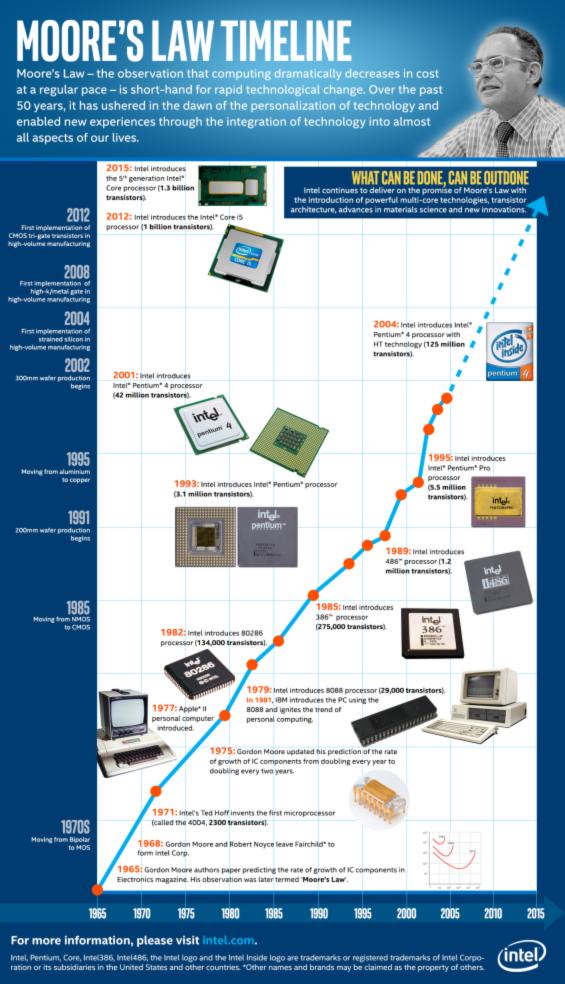Archive for the ‘computing’ category: Page 790
Jun 6, 2016
Quantum Computing And How You Can Get Involved Now
Posted by Karen Hurst in categories: business, computing, education, mobile phones, quantum physics
Change is coming; will you be ready?
I remember many decades ago when folks were trying to learn a new OS that changed businesses, governments/ educational institutions, and households around the world. That OS was called Windows; and hearing the stories as well as watching people try to use a PC and a mouse was interesting then.
Now, the world will again go through a large scale metamorphosis again when more and more QC is evolved and made available over the next 5 to 7 years in the technology mainstream. Change is often necessary and often can be good as well.
You might ask yourself, “What is quantum computing, and how do I get involved?”
Continue reading “Quantum Computing And How You Can Get Involved Now” »
Jun 6, 2016
Microsoft gives millions to fund quantum computing research at Purdue
Posted by Karen Hurst in categories: computing, quantum physics
Change is coming; and Microsoft will be there.
With funding from Microsoft, a Purdue research team known as ‘Station Q Purdue’ will research potential methods of quantum computing.
“In order to see if these ideas that (Microsoft) has are realistic, whether they can be experimentally verified and then put to use, (Microsoft) has teamed up with certain experimentalists around the world,” said professor Michael Manfra, the director of Station Q Purdue.
Continue reading “Microsoft gives millions to fund quantum computing research at Purdue” »
Jun 6, 2016
As #HPEDiscover 2016 opens, the market asks ‘quo vadis?’
Posted by Karen Hurst in categories: business, computing
As Hewlett-Packard Enterprise Co. (HPE) Discover 2016 opens tomorrow in the Venetian/Palazzo in Las Vegas, the big question hanging over it is: Quo Vadis HPE? Last month the company surprised the industry with the announcement that it would spin off its huge consulting division, the second time in a year it has split itself in half. What is left is the core hardware division of HPE stripped of almost everything extraneous. It is still one of the largest vendors in the industry, with an aging business with huge revenues but shrinking margins facing major competition from every side. It is also a company with huge potential. This conference will be the forum for HPE to unveil its plans for the future.
theCUBE will be at Discover 2016 starting tomorrow, for three days of wall-to-wall interviews with key executives from HPE, its partners and customers. Watch streaming coverage live and find out what is happening behind the headlines with the probing interviews conducted by the industry experts from SiliconANGLE Media, led by co-CEOs John Furrier and David Vellante. And if you have your own questions, you can post them on the #HPEDiscover CrowdChat that will run parallel to the conference. Furrier in particular monitors CrowdChat and will use questions people post there. If you are at the conference you can watch the replays later to pick up things you missed and get more depth on the trends.
The two spin-offs have left HPE in a strong position financially. It has rid itself of nearly all its debt and is still throwing off huge amounts of cash from its hardware business. However, the IT infrastructure market is changing radically under pricing pressure from the big cloud providers with their hyperscale data centers. In the last 18 months we have seen IBM sell its entire x86-based business to Lenovo Group Ltd. and Dell Inc. announce that it will purchase EMC, both clear responses to this margin pressure. While the hardware market is growing with the new, high-volume computing environments such as social media, Intel-powered servers in particular are rapidly becoming commoditized. One way or another, HPE needs to transform. Intel Inside will not be enough to sustain it as it is today.
Continue reading “As #HPEDiscover 2016 opens, the market asks ‘quo vadis?’” »
Jun 6, 2016
The future of computing may lie in living cells
Posted by Karen Hurst in categories: computing, internet, quantum physics, robotics/AI
Technology, meet your future beyond AI & Quantum.
While scientists study the possibilities of storing data in DNA, the web magazine Engadget reports that another group of researchers are looking into the possibility of utilizing living cells for next-generation computing.
The latest studies have developed a method of integrating both analog and digital computing into gene-based circuits. This allowed researchers to convert analog chemical reactions into binary output, or the ones and zeros that regular computers understand.
Continue reading “The future of computing may lie in living cells” »
Jun 6, 2016
SpaceX Is Heading to Mars in 2018 and Sending Humans in 2025
Posted by Shailesh Prasad in categories: computing, Elon Musk, government, space travel
Elon Musk is confident that SpaceX will be able to send people to Mars in 2024, with arrival in 2025. This is in line with his long-term vision of colonizing the Red Planet, as he strongly believes it is the next step in ensuring the survival of human civilization.
After saying that the chances of us not being a computer simulation is just one in billions, Elon Musk, the CEO of SpaceX and Tesla Motors, went on to say that SpaceX will be sending people to Mars by 2024, with arrival planned for 2025.
When asked about what he thinks the government on Mars will be, he playfully joked: “Well I think I was just declared king of Mars a moment ago.”
Continue reading “SpaceX Is Heading to Mars in 2018 and Sending Humans in 2025” »
Jun 6, 2016
Former NASA chief unveils $100 million neural chip maker KnuEdge
Posted by Klaus Baldauf in categories: computing, finance, health, robotics/AI
It’s not all that easy to call KnuEdge a startup. Created a decade ago by Daniel Goldin, the former head of the National Aeronautics and Space Administration, KnuEdge is only now coming out of stealth mode. It has already raised $100 million in funding to build a “neural chip” that Goldin says will make data centers more efficient in a hyperscale age.
Goldin, who founded the San Diego, California-based company with the former chief technology officer of NASA, said he believes the company’s brain-like chip will be far more cost and power efficient than current chips based on the computer design popularized by computer architect John von Neumann. In von Neumann machines, memory and processor are separated and linked via a data pathway known as a bus. Over the years, von Neumann machines have gotten faster by sending more and more data at higher speeds across the bus as processor and memory interact. But the speed of a computer is often limited by the capacity of that bus, leading to what some computer scientists to call the “von Neumann bottleneck.” IBM has seen the same problem, and it has a research team working on brain-like data center chips. Both efforts are part of an attempt to deal with the explosion of data driven by artificial intelligence and machine learning.
Goldin’s company is doing something similar to IBM, but only on the surface. Its approach is much different, and it has been secretly funded by unknown angel investors. And Goldin said in an interview with VentureBeat that the company has already generated $20 million in revenue and is actively engaged in hyperscale computing companies and Fortune 500 companies in the aerospace, banking, health care, hospitality, and insurance industries. The mission is a fundamental transformation of the computing world, Goldin said.
Continue reading “Former NASA chief unveils $100 million neural chip maker KnuEdge” »
Jun 6, 2016
Russian developer collaborates with FB, Google to help ‘machines see’
Posted by Karen Hurst in categories: computing, robotics/AI
A Russian developer here has created an open source computer vision platform, in collaboration with Facebook and Google, that acts as a teaching machine and enables them “see”.
VisionLabs, a solutions developer in the field of computer vision, data analysis and robotics, and a Skolkovo IT Cluster resident have developed this as a global open-source computer vision project with the support of Facebook and Google, an official said.
VisionLabs integrated two popular libraries for developers — OpenCV and Torch. The joint project with Facebook and Google was launched last year. “The two IT giants became interested in the in-depth study of neural networks and artificial intelligence and hence extended their support,” the official told IANS.
Continue reading “Russian developer collaborates with FB, Google to help ‘machines see’” »
Jun 6, 2016
Tiny lasers on silicon means big things for electronics
Posted by Karen Hurst in categories: computing, electronics, nanotechnology, quantum physics, solar power, sustainability
Silicon forms the basis of everything from solar cells to the integrated circuits at the heart of our modern electronic gadgets. However the laser, one of the most ubiquitous of all electronic devices today, has long been one component unable to be successfully replicated in this material. Now researchers have found a way to create microscopically-small lasers directly from silicon, unlocking the possibilities of direct integration of photonics on silicon and taking a significant step towards light-based computers.
Whilst there has been a range of microminiature lasers incorporated directly into silicon over the years, including melding germanium-tin lasers with a silicon substrate and using gallium-arsenide (GaAs) to grow laser nanowires, these methods have involved compromise. With the new method, though, an international team of researchers has integrated sub-wavelength cavities, the basic components of their minuscule lasers, directly onto the silicon itself.
To help achieve this, a team of collaborating scientists from Hong Kong University of Science and Technology, the University of California, Santa Barbara, Sandia National Laboratories and Harvard University, first had to find a way to refine silicon crystal lattices so that their inherent defects were reduced significantly enough to match the smooth properties found in GaAs substrate lasers. They did this by etching nano-patterns directly onto the silicon to confine the defects and ensure the necessary quantum confinement of electrons within quantum dots grown on this template.
Jun 6, 2016
Historian: When Computers and Biology Converge, Organisms Become Algorithms
Posted by Shailesh Prasad in categories: biotech/medical, computing, economics, food, information science
On May 11, 2016, the Berggruen Philosophy and Culture Center invited Yuval Noah Harari, a professor of history at Hebrew University of Jerusalem and author of the international bestseller “Sapiens: A Brief History of Humankind,” to deliver a talk on “The New Inequalities” at Tsinghua University in Beijing. Prior to the talk, Harari was interviewed by BPPC director Daniel A. Bell. This is an edited transcript of the interview.
You argue in your book that material progress, for example in the agriculture revolution and industrial capitalism doesn’t necessarily contribute to human happiness. In fact, it may lead to the opposite. Can you elaborate on that?
Until the middle of the 19th century there was a complete lack of correlation between material progress and the well-being of individual humans. For thousands of years until about 1850 you see humans accumulating more and more power by the invention of new technologies and by new systems of organization in the economy and in politics, but you don’t see any real improvement in the well-being of the average person. If you are the emperor of China, then obviously you’re much better off. But if you’re an average Chinese peasant in 1850, it’s very, very hard to say that your life is any better than the life of hunter-gatherers in the Yangtze Valley 20,000 years ago. You work much harder than them, your diet is worse, you suffer far more from infectious diseases, and you suffer far more from social inequality and economic exploitation.
Continue reading “Historian: When Computers and Biology Converge, Organisms Become Algorithms” »















